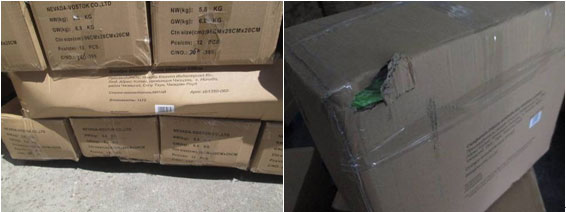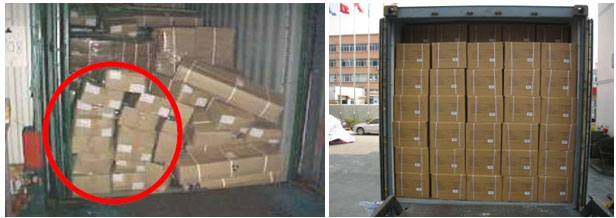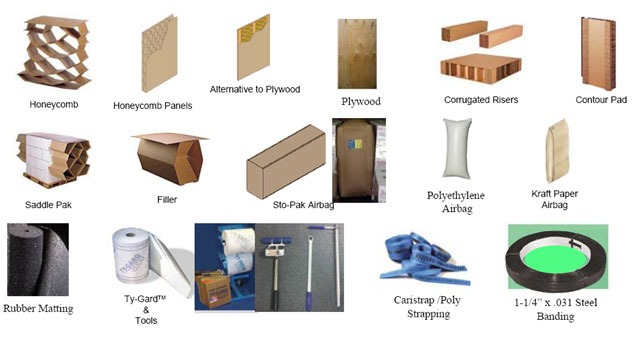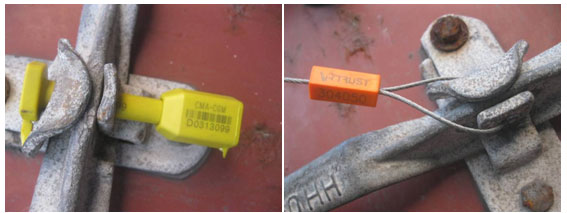Do you hope to make sure your purchased goods arriving at your warehouse safely? The answer is absolutely “Of course, yes”.
But it seems we don’t achieve it on many cases. That's why we need to pay attention to the loading supervision of containers.
Common Reasons of Container Damage
Some below problems may cause poor container loading.
- Before container loading, the products are mess and couldn’t make a clear idea of the quantity. So we don’t know what the exact quantity of loading goods is.
- Many different items are mixed into different containers, which may cause tariff increases.
- Large gap or much space left on the container. No any filler or fixed materials for protection of the goods.
- Large gap on the cartons, it will cause deformation or collapse.
Above mentioned, there are other kinds of products causing unsuccessful loading. Have you ever thought how you can avoid this and make less risk for your products?
Tips for Loading Container Properly
Container loading is a critical step in the delivery of your goods and an important part of quality control. Though the product is with good quality at the beginning, if it is loaded incorrectly, it can be of poor quality or even unsalable when it arrives. You could also end up with receiving the wrong product, incorrect quantities, wet gift boxes or a wide variety of other defects directly related to poor handling during the loading. Especially for the new suppliers, you should be very cautious.
We would like to share with you some tips below about how to supervise container loading and achieve good loading.
1. Making sure the products are “your” products. Before the loading, you should check the products quantity by counting the cartons. And then randomly open several cartons to verify whether they are the correct products.

2. Making loading plan, especially the situation of more than 1 container. Before estimating the loading, please use software to make a proper calculation of the space of your products needed. In this way, it not only helps you to save money, but also makes a good preparation.
3. Repairing defective products and packages before the loading. If some of products or packages are found as defective ones. You should ask your supplier to repair or change them. For packages, if they are not good enough, it may not protect your products well during transportation. So it must be sure to be protective packages.

4. Checking the conditions of the container. The container should be dry and in good working condition, free from stains, bad odors, large dents and holes, suitable for loading. While if it is crushed, with large holes, containing other serious damage, it is not suitable for storing and protecting the cargo especially when improperly palletized. We also suggest that you should mark down the container and truck numbers for record.

5. Delaying the loading under the inclement weather. If the products are loaded during the bad weather, it will make the products carton wet, frosted. When the products arrive at the destination, it may be damp or other caused other damage to the products. So the loading should be conducted in a good weather.
6. Putting the goods in orders. You should load the goods one by one, line by line so that they would be kept in balance inside.
Wrong Correct

7. Pay attention to the remained products. When finishing loading, check whether some products remained after loading or not. If yes, you should make a discussion with your supplier at once. Or there will be shortage of products and you may not be able to get the rest of goods in time.
8. Making protective materials on extra space. If there is more space left after finish loading, please be sure to make some protective materials to avoid damage of your products during transportation. We advise to add the filler between the gaps, use the strings or slats to fix the products.

9. Marking down the seal number. It is important for you to record the seal number. In case the container is opened after the loading supervision, you could know about it when you receive the goods.

We sincerely hope that these tips are beneficial to you and everything goes well on your business.
Why V-Trust for Container Loading Supervision?
V-Trust offers the container loading supervision service and can carry out a tailor-made checking plan according to your specific requirements. During container loading supervision, we will monitor the loading process, verifying product quantity, container condition and ensuring the proper handling of your cargo. Quality spot-checks are performed before loading to ensure your order meets your standards.
For more information or questions about our container loading supervision services, please feel free to contact us today.




内容